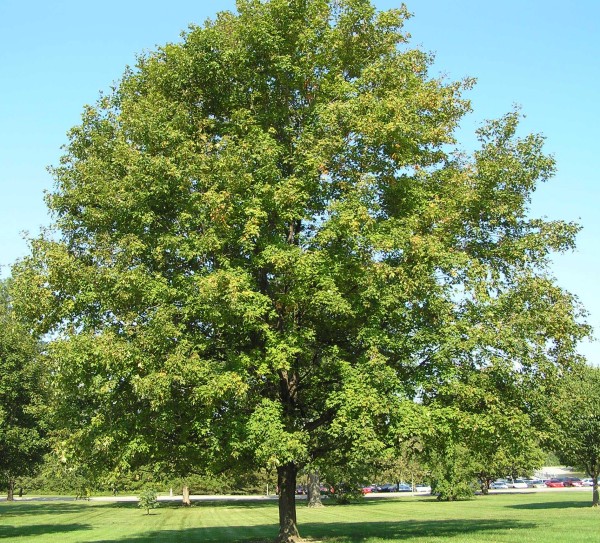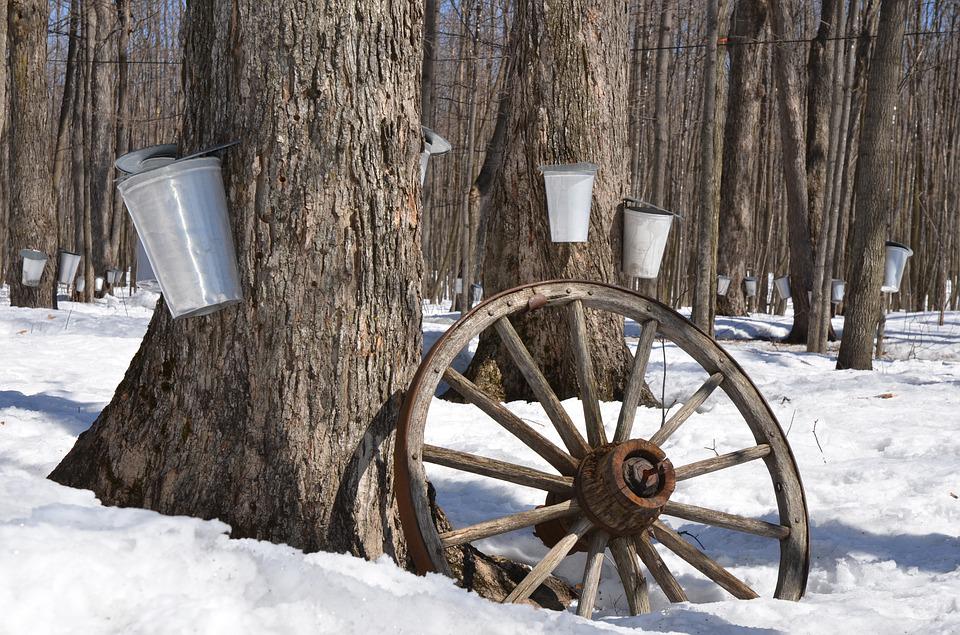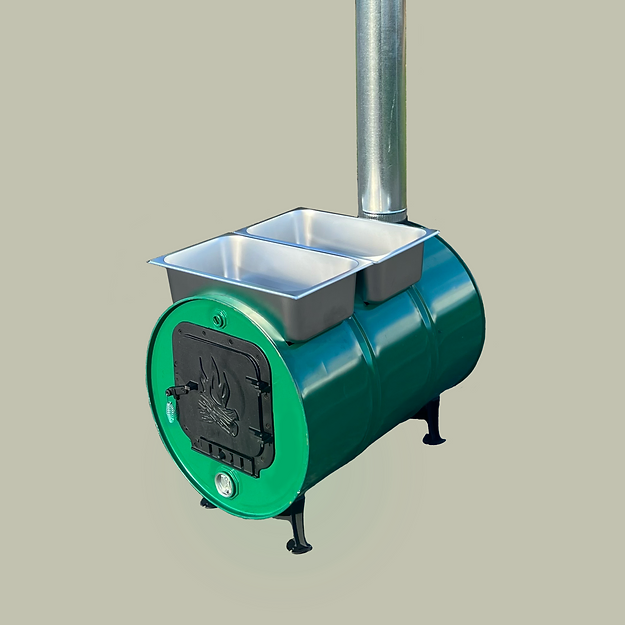
Okay, I know Vermont gets all the press when it comes to maple syrup. That’s because it produces about half of the five million gallons of maple syrup made annually in the United States. However, you can make perfectly fine maple syrup in Indiana. In fact, several Indiana towns have maple syrup festivals, including:
- Salem – Maple Syrup Festival: Held at the property of LM Sugarbush, which is approximately nine miles east of Salem. Activities include music, pony rides, tomahawk throwing, scavenger hunt and more. Food is also available onsite and there will be over fifty craft vendors present.
- Wakarusa Maple Syrup Festival: A three-day event organized by the Wakarusa Chamber of Commerce. In addition to maple syrup, it features entertainment, carnival rides, flag football tournament, 5K walk or run, and a parade. There will also be plenty of food vendors with everything from funnel cakes to fajitas.
- Rockville – Parke County Maple Fair: Held at the Parke County Fairgrounds on two weekends. Features a pancake breakfast and local vendors.
- Hendricks County (West of Indianapolis) – McCloud Maple Syrup Days: Held on two consecutive Saturdays at McCloud Nature Park near North Salem.
- New Carlisle – Sugar Camp Days: Features homemade baked goods made with maple syrup along with a pancake and sausage breakfast.
Indiana also has a Maple Syrup Weekend each spring. That weekend you can visit any of about 15 sugar camps around the state where maple syrup is being made.
It takes a lot of work to make maple syrup. The first thing you need are sugar maple trees, like the one shown here. It takes approximately 40 gallons of sugar maple sap to make maple syrup. You will also need a lot of firewood to boil off all that excess liquid. You can get about 10 gallons of sap from a mature sugar maple growing in a woods among other trees. Sugar maples which are grown away from the competition of other trees may produce twice that amount.
Collecting Sap from Sugar Maples

The time to collect maple sap is typically late February or early March in Indiana. Sap flows best when temperatures are below freezing at night and above freezing during the day. Collection requires a drill, a spout (called a spile) for each tree and a bucket to collect the sap. Do not tap trees if they are less than 10 inches in diameter (31 inches circumference) at chest height. Use two taps on trees with a diameter greater than 18 inches. Three taps can be used if the tree diameter is greater than 25 inches. When using multiple taps, spread them out on different sides / heights of the tree.
When tapping a tree, drill a hole that matches the diameter of the spile (Usually around 7/16 of an inch). The hole should be two to two and a half inches deep, and drilled slightly upward. The shavings coming out of the tree while drilling should be light in color. Move the tap hole to a different location if you encounter dark colored shavings. These indicate unhealthy sapwood. Most people place their tap holes two and a half to three feet above the ground, but the height can be whatever is most convenient.
Tap the spile into the tree as gently as possible. Use a gallon sized bucket to collect the sap, and keep it covered to prevent contamination. Alternatively, plastic tubing can be used to connect the spile to gallon sized plastic jugs on the ground.
Converting Maple Sap to Maple Syrup

Once you have your maple sap, it’s time to start boiling it down. To do this you need an evaporator to get rid of the excess water. You can buy one from a variety of manufacturers. The one shown here is from Bassett Maple Company in Michigan. You can also construct one yourself if you’re on a tight budget. Visit That Yurt to see how, you can make one inexpensively. Please note that one you make yourself will probably be less efficient.
Fueling the evaporator requires a great deal of firewood. Commercial operators typically use about one cord of wood to produce 25 gallons of maple syrup. Most hobbyists will probably get around 15 gallons of syrup from a cord of wood. For information about growing your own firewood, please visit our page about Black Locust.
Boiling the sap increases its sugar concentration. This also increases its density. Use a hydrometer to determine when it reaches the proper concentration. his measures the Brix, which is the percentage of sugar in a mixture. The proper range for maple syrup is 66 to 68 Brix. It’s important to get this right. Maple syrup with a Brix that is too low can spoil.
Maple Syrup Grades
Not long ago, grades of maple syrup varied from one state to another. In 2011, the International Maple Syrup Institute petitioned the United States Department of Agriculture to adopt a uniform standard. In 2015, they issued standards which specified four classes based on color (which influences taste), or more specifically, light transmission:
- Golden (>75% light transmission)
- Amber (50-75% light transmission)
- Dark (25-50% light transmission)
- Very Dark (<25% light transmission)
The darker the syrup, the stronger the taste. People often ask which is best. That is strictly a matter of personal taste.
Commercial Maple Syrup Production in Indiana
Sugar maple is the most common tree in Indiana, and in the early twentieth century, it produced more maple syrup than any other state. At that time, cane and beet sugar were expensive and difficult to obtain, while maple syrup could be produced locally. Today, the United States produces about five million gallons of maple syrup annually. Approximately half of that total comes from Vermont. Indiana now accounts for lee than one percent of the nation’s total production. Indiana’s production has been increasing in recent years. The Indiana Maple Syrup Association promotes the industry, while the Department of Agriculture has awarded grants to promote maple syrup production. Purdue University recently obtained one of these grants.
Maple syrup production is a good side business for orchards and small farms. Most of the work is done in late February and early March. This is a time when the weather is not suitable for most other activities. Although producing maple syrup takes a lot of work, it commands a premium price. The average retail price for a gallon of maple syrup in Indiana is over forty dollars. Collection systems using plastic tubing instead of buckets reduce the labor required, which makes production more practical and profitable for commercial operations.
Technical Innovations in Maple Syrup Production
This article has described the traditional way of making maple syrup, which is the way most small producers start. As with everything else, technology is changing the way maple syrup is produced. Carrying buckets of sap requires a lot of labor, so larger producers use tubing to connect many trees to one tank. By using vacuum pumps, the sap not only flows faster, but producers can harvest more of it from each tree. The tanks containing the sap can be hauled out on a John Deere Gator or other vehicle. Reverse osmosis systems can remove some of the water from the sap, which reduces the time and firewood required to boil it down into maple syrup. Because of these innovations, it is possible to produce more maple syrup in less time.
Indiana’s maple syrup production has been rising. In 2016 12,000 gallons were produced. By 2020 it doubled to 24,000 gallons. Better technology should allow this upward trend to continue. Unfortunately, climate change may derail this trend. Producers say their season for tapping trees used to be four to six weeks. Now they feel fortunate if their season lasts four weeks.
Indiana Producers
If you’re not interested in doing all the tapping and boiling to make your own maple syrup, there are a number of producers in the state who offer it for sale. Here are a few:
- Firm Root Farm – Muncie
- Harris Sugar Bush – Grenncastle
- LM Sugarbush – Salem
- Maple Acres – Avilla
- Maplewood Farms – Brownsville
The Great Maple Syrup Heist
While Vermont produces half the maple syrup made in the United States, the Canadian province of Quebec is the global powerhouse, accounting for about seventy percent of world production. Quebec producers formed a cartel known as the Federation of Quebec Maple Syrup Producers. They control supply and set prices. They maintain a large reserve of maple syrup at various locations in Quebec. During the winter of 2011 through 2012, insiders pilfered a whopping 3,300 tons of maple syrup. Initially, they emptied barrels of syrup and refilled them with water. Later they got sloppy and left the barrels empty.
Their thievery was discovered when an inspector began climbing up barrels that he expected to weigh over five hundred pounds each. Instead, the barrels were empty and he nearly fell. Eventually, seventeen people were arrested. The maple syrup they stole was valued at eighteen million dollars. The judge sentenced the ringleader to eight years in prison.
